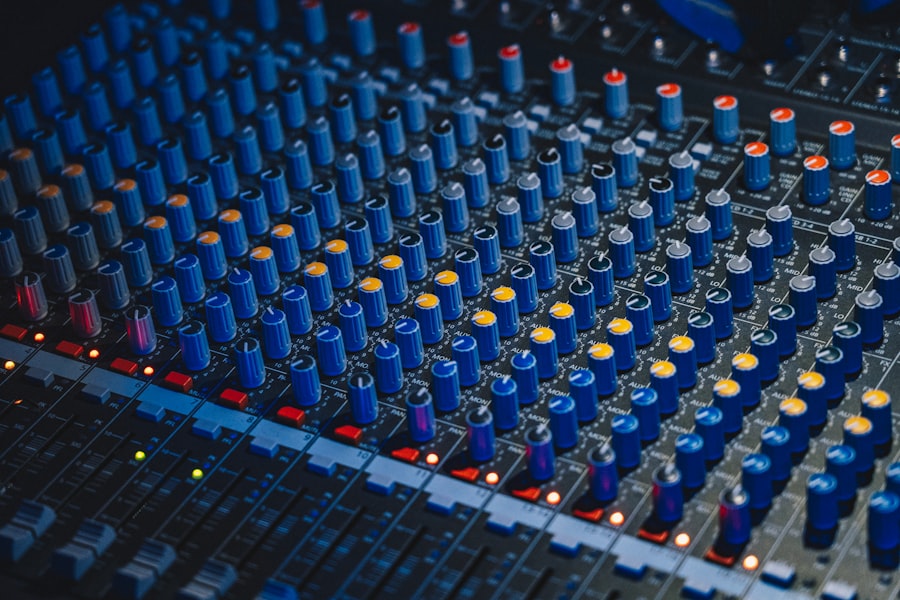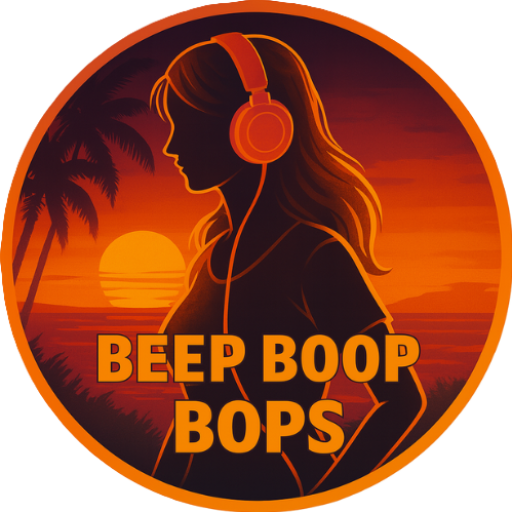Lo-Fi music production has emerged as a captivating genre that resonates with many listeners, offering a unique blend of nostalgia and modernity. As you delve into this world, you’ll discover that Lo-Fi is not just about the sound; it’s a lifestyle, an aesthetic, and a form of artistic expression. The term “Lo-Fi” refers to low-fidelity sound quality, which often includes imperfections such as background noise, distortion, and tape hiss.
These elements create a warm, inviting atmosphere that transports you back to simpler times, making it a favorite among those seeking solace in their music. As you embark on your journey into Lo-Fi music production, you’ll find that it encourages creativity and experimentation. Unlike mainstream genres that often prioritize polished perfection, Lo-Fi embraces the raw and unrefined.
This genre invites you to explore your artistic voice without the constraints of conventional music production. Whether you’re looking to create soothing beats for studying or crafting soundscapes for relaxation, Lo-Fi offers a versatile platform for your musical endeavors. By understanding the foundational elements of this genre, you can begin to carve out your own niche within the expansive world of Lo-Fi music.
Key Takeaways
- Lo-Fi music production focuses on creating a raw and unpolished sound, often using vintage and analog equipment.
- Basic recording equipment for Lo-Fi music production includes a good quality microphone, audio interface, and headphones.
- Essential software and plugins for Lo-Fi music production include digital audio workstations (DAWs) and plugins for adding vintage effects.
- Vintage and analog gear such as tape machines, analog synthesizers, and outboard gear can add warmth and character to Lo-Fi productions.
- Creative sound manipulation tools like vinyl simulators, tape emulators, and lo-fi effect pedals can add unique textures to Lo-Fi music and can be found at affordable prices or through DIY options.
Basic Recording Equipment
To get started with Lo-Fi music production, you’ll need some essential recording equipment that doesn’t have to break the bank. At the heart of your setup is a digital audio workstation (DAW), which serves as the central hub for recording, editing, and mixing your tracks. Popular DAWs like Ableton Live, FL Studio, and GarageBand provide user-friendly interfaces that cater to both beginners and seasoned producers alike.
As you familiarize yourself with your chosen DAW, you’ll find that it offers a plethora of tools and features designed to enhance your creative process. In addition to a DAW, investing in a quality audio interface is crucial for capturing sound with clarity. An audio interface acts as a bridge between your computer and your recording equipment, allowing you to connect microphones, instruments, and other devices.
Look for an interface that offers multiple inputs and outputs, as this will give you the flexibility to record various sources simultaneously. Furthermore, a good pair of studio monitors or headphones is essential for accurately hearing your mixes. This will enable you to make informed decisions about your sound and ensure that your tracks translate well across different listening environments.
Essential Software and Plugins

Once you have your basic recording equipment in place, it’s time to explore the software and plugins that will elevate your Lo-Fi productions. A wide range of virtual instruments and effects plugins are available to help you achieve that signature Lo-Fi sound. For instance, consider incorporating soft synths that emulate vintage keyboards or analog synthesizers.
These instruments can add warmth and character to your tracks, creating a rich sonic palette that captures the essence of Lo-Fi. In addition to virtual instruments, effects plugins play a vital role in shaping your sound. Reverb and delay are essential tools for creating depth and space in your mixes.
You might also want to experiment with saturation and distortion plugins to introduce warmth and grit to your sounds. Many producers find that using tape emulation plugins can replicate the nostalgic qualities of analog recordings, further enhancing the Lo-Fi aesthetic. By combining these software tools with your recording equipment, you’ll be well on your way to crafting unique and engaging tracks.
Vintage and Analog Gear
For those who want to take their Lo-Fi music production to the next level, incorporating vintage and analog gear can add an authentic touch to your sound. Analog synthesizers, drum machines, and tape recorders are often sought after for their unique tonal qualities and character. These pieces of equipment can introduce subtle imperfections that contribute to the overall charm of Lo-Fi music.
If you have access to vintage gear, consider integrating it into your workflow to create a more organic sound. However, acquiring vintage equipment can be costly and may not be feasible for everyone. Fortunately, there are many affordable alternatives that capture the essence of analog sound without the hefty price tag.
For example, there are numerous boutique companies producing modern recreations of classic gear or even software emulations that mimic their characteristics. By blending these vintage elements with your digital setup, you can create a hybrid sound that pays homage to the past while embracing contemporary production techniques.
Creative Sound Manipulation Tools
One of the most exciting aspects of Lo-Fi music production is the ability to manipulate sounds creatively. As you explore this genre, you’ll discover various tools and techniques that allow you to transform ordinary sounds into something extraordinary. Sampling is a fundamental practice in Lo-Fi music; it involves taking snippets of existing recordings—be it vinyl records, field recordings, or even everyday sounds—and repurposing them in your tracks.
This technique not only adds texture but also infuses your music with a sense of history and storytelling. In addition to sampling, consider experimenting with granular synthesis or time-stretching techniques. Granular synthesis allows you to break down sounds into tiny grains and manipulate them in real-time, creating unique textures and atmospheres.
Time-stretching can help you alter the tempo or pitch of samples without compromising their quality. By incorporating these creative sound manipulation tools into your workflow, you’ll unlock new possibilities for crafting captivating Lo-Fi tracks that stand out from the crowd.
Affordable and DIY Options

Free and Affordable Software Options
If you’re on a budget or simply enjoy the process of creating things yourself, there are plenty of affordable and DIY options available for aspiring Lo-Fi producers. One of the most accessible ways to get started is by utilizing free or low-cost software tools. Many DAWs offer free versions with limited features that are perfect for beginners looking to experiment without financial commitment.
DIY Hardware Options for the Hands-On Producer
Additionally, there are numerous free plugins available online that can help you achieve that desired Lo-Fi sound without spending a dime. Moreover, consider exploring DIY hardware options for those who enjoy hands-on projects. Building your own effects pedals or synthesizers can be a rewarding experience that not only saves money but also allows you to customize your gear according to your preferences.
Embracing the Spirit of Lo-Fi Music Production
There are countless online resources and communities dedicated to DIY audio projects where you can find schematics and tutorials tailored for beginners. By embracing these affordable and DIY options, you can cultivate your skills as a producer while staying true to the spirit of Lo-Fi music production. In conclusion, Lo-Fi music production is an inviting realm filled with opportunities for creativity and self-expression.
Embarking on a Fulfilling Journey in Lo-Fi Music Production
By understanding the basic recording equipment needed, exploring essential software and plugins, incorporating vintage gear, manipulating sounds creatively, and considering affordable options, you can embark on a fulfilling journey in this genre. Whether you’re producing beats for relaxation or crafting intricate soundscapes, remember that the beauty of Lo-Fi lies in its imperfections—so embrace them as you develop your unique musical voice.



